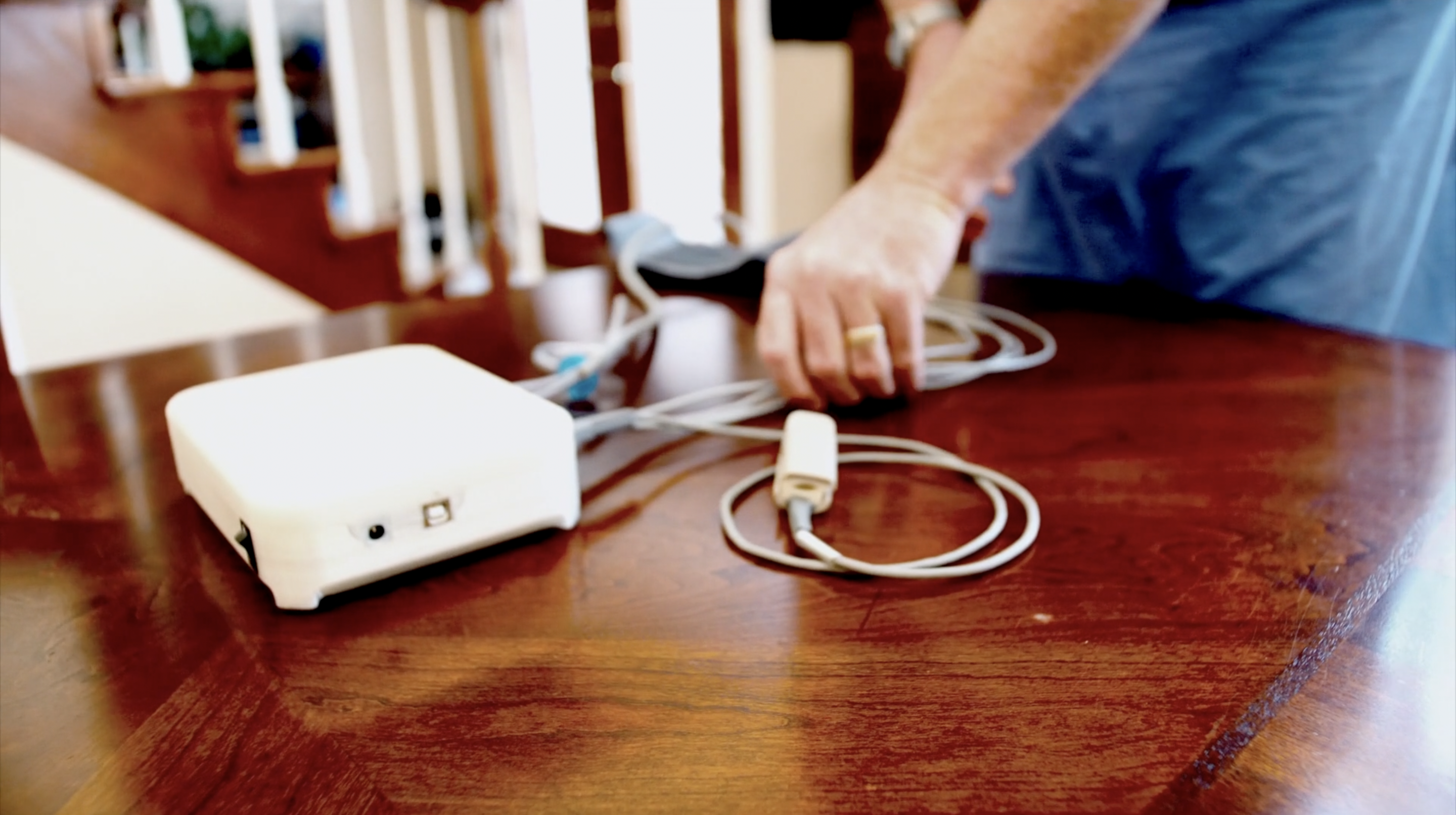Easy to Use
The SAM is understandable and straightforward to use for the non-technician, as well as the experienced physician. Recognizable visual cues and a reserved design create the space for clear, timely information.
Reliable
The SAM is robust medical hardware that saves lives in difficult places - from the operating theater to a remote mountainside. The SAM works hard so you can save lives when it counts.
Secure
Every part of The SAM's ecosystem is built with rigorous medical compliance in mind, even as we liberate data to help doctors make great decisions. We are committed to patient privacy and data security across the globe.
The SAM Device
The SAM system is built on the foundational idea that the computer in your pocket is more powerful than the one that put men on the moon. Smartphones and tablets are readily available technology across the globe, and The SAM leverages this resource to save lives.
Our patent-pending innovation wirelessly and securely uses the processing power and screen from a connected device to give doctors the real-time vital signs data they require for safe surgery. Doctors simply launch an easy-to-use mobile app, connect it to The SAM module, and are prepared to administer anesthesia and medical care safely in any setting.
The SAM utilizes technology available in most Western hospital settings and makes it available to those who need it most - focusing on the key elements of safe surgery as recommended by the World Health Organization.
Why Measure Vital Signs During Surgery?
People receiving anesthesia must be carefully watched, because the medicines used for anesthesia affect the central nervous system, cardiovascular system, and respiratory system (airway and lungs). Anesthesia suppresses many of the body's normal automatic functions. So it may significantly affect your breathing, heartbeat, blood pressure, and other body functions.
The SAM Measures:
Measurement of the oxygen saturation of the blood improved the safety of anesthesia, perhaps more than any other innovation in history. Because anesthetics intentionally or as a necessary side effect, cause breathing to slow or stop, the anesthesiologist becomes responsible for this obviously vital function. Having a direct measure of the adequacy of ventilation and oxygenation is immensely valuable during any anesthetic. Once a patient's oxygen drops, a physician has under three minutes to prevent the risk of heart failure, brain damage, and death.
Hemoglobin is the oxygen-carrying molecule in red blood cells. The pulse oximeter is the device used to measure how saturated the hemoglobin is with oxygen. Varying wavelengths of light are used to detect the oxygen in the arterial blood. A value between 95 and 100 percent is normal. Prior to the invention of the pulse oximeter, physicians could only identify hypoxia (oxygen starvation) when patients' skin began turning blue, with oxygen saturation damagingly low at 85. This number is called the "sat" or the "pulse ox".
Capnography is the monitoring of carbon dioxide in the respiratory gases. By measuring the end-tidal CO2 (ETCO2, the level of carbon dioxide released at the end of expiration) through a mask attached to a CO2 sensor, EMS technicians can receive an early warning of a patients worsening condition.
During expiration, the CO2 can be measured and graphed to give visual representation of breathing. The amount of carbon dioxide at the end of expiration is displayed as a number. If this number falls out of the normal range, it can be a sign of alteration of respiratory function. This may be a normal reaction to the type and depth of anesthesia, or may represent dysfunction of the respiratory or pulmonary system. This is just one of the many variables that the anesthesiologist must monitor, diagnose/evaluate and respond to during the course of anesthesia.
Anesthetics, including most general anesthesia drugs as well as epidurals and spinals, tend to cause blood pressure to drop. Some people tolerate these drops better than others and it is always important to be able to get rapid and frequent blood pressure measurements under anesthesia.
Periodic, quantitative measurement of blood pressure (BP) in humans, predating the era of evidence-based medicine by over a century, is a component of the American Society of Anesthesiologists standards for basic anesthetic monitoring and is a staple of anesthetic management worldwide.
An electrocardiogram (EKG, ECG) is a test that measures the electrical signals that control heart rhythm. The test measures how electrical impulses move through the heart muscle as it contracts and relaxes.
During an electrocardiogram, small pads (electrodes) are attached to the skin on the chest, arms, and legs. The electrodes are also connected to a machine that translates the electrical activity into line tracings. This is essential for the identification of life-threatening arrhythmias.
Maintaining a constant ideal core temperature (normothermia) has long been identified as a key method of fighting the negative patient outcomes that can come from hypothermia, including surgical site infections, excess bleeding, and cardiac disturbances. Measuring temperature throughout the surgery can be an important signal in patient health.
To measure patient temperature, a monitor is connected to the skin by a lead held in place by a small adhesive patch.
Join #TheSAMGlobalTeam to learn more about how you can save lives around the world.
Join #TheSAMGlobalTeam
